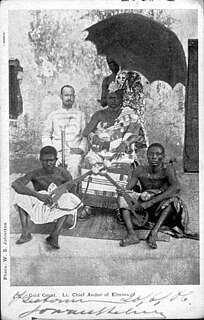 W
WChief Kweku Andoh was a military officer in the British army and Regent of Edina State (1873–1898). The Fanti expression "Andoh nye woa?" meaning "Art thou Andoh?" is a way of saying "Who Do You Think You Are?" and serves as a testament to the great esteem held towards Chief Andoh.
 W
WJohn William Arthur was a medical missionary and Church of Scotland minister who served in British East Africa (Kenya) from 1907 to 1937. He was known simply as "Doctor Arthur" to generations of Africans.
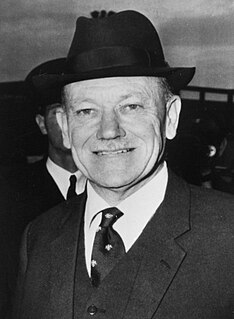 W
WSir Thomas Hugh William Beadle, was a Rhodesian lawyer, politician and judge who served as Chief Justice of Southern Rhodesia from March 1961 to November 1965, and as Chief Justice of Rhodesia from November 1965 until April 1977. He came to international prominence against the backdrop of Rhodesia's Unilateral Declaration of Independence (UDI) from Britain in November 1965, upon which he initially stood by the British Governor Sir Humphrey Gibbs as an adviser; he then provoked acrimony in British government circles by declaring Ian Smith's post-UDI administration legal in 1968.
 W
WColonel Sir John Edmond Hugh Boustead, KBE, CMG, DSO, MC & Bar, was a British military officer, modern pentathlete, and diplomat who served in numerous posts across several Middle Eastern countries, including ambassador to Abu Dhabi from 1961 to 1965. The son of a tea planter from Sri Lanka, Boustead began his career with the Royal Navy, but soon joined the British Army to fight in the trenches during World War I, where he earned his first of two Military Crosses. Following an appearance at the 1920 Summer Olympics, Boustead spent several years as a mountaineer and explorer prior to being appointed commander of the Sudan Camel Corps, with whom he served through World War II. He then embarked on a diplomatic career until his 1965 retirement and published an autobiography, The Wind of Morning, in 1971, nine years prior to his death in Dubai.
 W
WFrederick Russell Burnham DSO was an American scout and world-traveling adventurer. He is known for his service to the British South Africa Company and to the British Army in colonial Africa, and for teaching woodcraft to Robert Baden-Powell in Rhodesia. He helped inspire the founding of the international Scouting Movement.
 W
WLt. General Sir Hugh Lyle Carmichael (1764–1813), was a British officer of the 2nd West India Regiment. He was Commander-in-Chief of the British Forces at the Siege of Santo Domingo. He was Lieutenant Governor of Demerara from 1812 until his death the following year. He was a strong proponent of giving native Caribbean troops the same rights as ordinary British soldiers.
 W
WWilliam Hew Clark-Kennedy, was a British-born Canadian soldier and a recipient of the Victoria Cross, the highest award for gallantry in the face of the enemy that can be awarded to British and Commonwealth forces.
 W
WLieutenant-Colonel Thomas Melville Dill OBE was a prominent Bermudian lawyer, politician, and soldier.
 W
WLieutenant Colonel John Henry Stephen Dimmer was an English recipient of the Victoria Cross, the highest and most prestigious award for gallantry in the face of the enemy that can be awarded to British and Commonwealth forces.
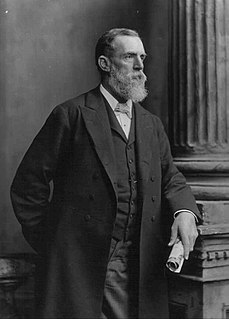 W
WHarry Escombe was a South African statesman.
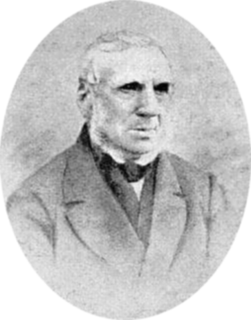 W
WJames FitzGibbon was an Irish soldier in the War of 1812.
 W
WHon. Maurice Raymond Gifford CMG was a British military officer.
 W
WLieutenant-General Sir John Bagot Glubb, KCB, CMG, DSO, OBE, MC, KStJ, KPM, known as Glubb Pasha, was a British soldier, scholar and author, who led and trained Transjordan's Arab Legion between 1939 and 1956 as its commanding general. During the First World War, he served in France. Glubb has been described as an "integral tool in the maintenance of British control."
 W
WSir Hamilton John Goold-Adams, was an Irish soldier and colonial administrator, who served as Governor of Queensland from 1915 to 1920.
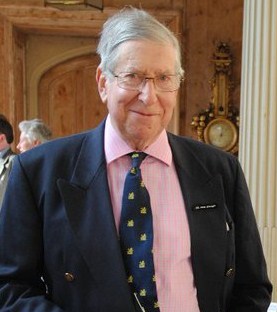 W
WMajor John Prendergast Gouriet was a British Army officer, company director and political activist. He was best known as a founder of the National Association for Freedom, and for pioneering the use of legal action to oppose actions of trade unions and campaigning groups which he believed interfered with personal liberty, during three years as the Association's director.
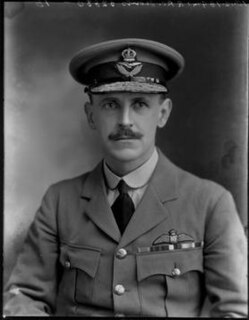 W
WBrigadier-General Percy Robert Clifford Groves, was a senior British air strategist who served in the British Army and the Royal Air Force (RAF). He campaigned for substantial reform of Britain's approach to air strategy following the First World War, in particular for an immediate expansion of the RAF to parity with the largest European force within striking distance. He was an advocate of the aerial "knock out blow": the possibility of ending a war in its early stages by launching a massive attack on the enemy's centres of gravity.
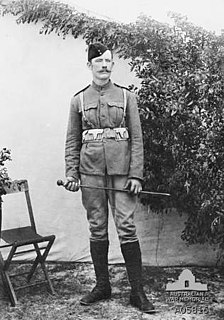 W
WPeter Joseph Handcock was an Australian-born Veterinary Lieutenant who served in the Bushveldt Carbineers during the Boer War in South Africa.
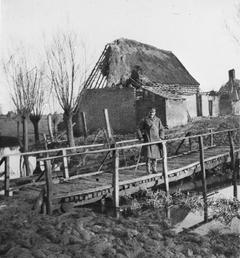 W
WLieutenant-Colonel Robert Leycester Haymes was a lieutenant-colonel in the British Army, Commander of the 6th Siege Battery during World War I and one of the first officers to establish an OP at the Battle of Neuve Chapelle. A collection of Haymes's World War I photographs held at the Imperial War Museum while he was in the O.P. and Commander of the 6th Siege Battery provide a unique insight into the early days of World War I including one of the first 9.2-inch howitzers to arrive in Flanders and the Headquarters of the 14th Division at Pont de Nieppe during the visit of King George VI and the Prince of Wales on 2 December 1914.
 W
WDavid Gordon Hines was a chartered accountant who as a British colonial administrator developed farming co-operatives in Tanganyika and later in Uganda. This radically improved the living standards of farmers in their transition from subsistence farming to cash crops. When he was responsible for development throughout Uganda, some 500,000 farmers joined co-operatives.
 W
WSecond Lieutenant Basil Arthur Horsfall, VC was a British-Ceylonese recipient of the Victoria Cross, the highest and most prestigious award for gallantry in the face of the enemy that can be awarded to British and Commonwealth forces.
 W
WArthur Benison Hubback was an English architect and soldier who designed several important buildings in British Malaya, in both Indo-Saracenic architecture and European "Wrenaissance" styles. Major works credited to him include Kuala Lumpur railway station, Ubudiah Mosque, Jamek Mosque, National Textile Museum, Panggung Bandaraya DBKL, Ipoh railway station, and Kowloon railway station.
 W
WCapt Richard Jacques ; an American colonial officer who served during Father Rale's War. He was responsible for the death of Father Sébastien Rale in the Battle of Norridgewock.
 W
WMajor Alexander Gordon Laing was a Scottish explorer and the first European to reach Timbuktu, arriving there via the north-to-south route in August 1826. He was killed shortly after he departed Timbuktu, some five weeks later.
 W
WSir Stephen Bartlett Lakeman, also known as Mazar Paşa or Mozhar Pasha was an English-born British and Ottoman adventurer, soldier, and administrator. A mercenary and veteran of several wars, including the Xhosa and Crimean conflicts, he was assigned by the Ottoman military to Wallachia, where he later settled, becoming in time a supporter of the liberal current in Romania. He was an influential figure in local politics during the early 1870s, and a mediator between Ion Brătianu's government and the Porte at the start of the Russo-Turkish War of 1877–1878. Lakeman is also noted for having introduced Eastern European fish species to England.
 W
WThomas Laycock was an English soldier, explorer, and later businessman, who served in North America during the War of 1812, but is most famous for being the first European to travel overland through the interior of Tasmania.
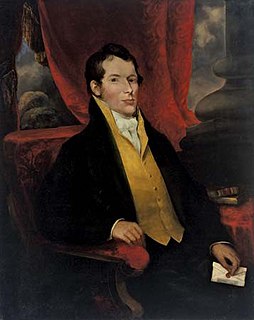 W
WJohn Macarthur was a British army officer, entrepreneur, politician, architect and pioneer of settlement in Australia. Macarthur is recognised as the pioneer of the wool industry that was to boom in Australia in the early 19th century and become a trademark of the nation. He is noted as the architect of Farm House, his own residence in Parramatta, and as the man who commissioned architect John Verge to design Camden Park Estate in Camden, in New South Wales. He was instrumental in agitating for, and organising, a rebellion against the colonial government in what is often described as the Rum Rebellion.
 W
WBrigadier Charles Frederick Cunningham Macaskie was an English barrister who served as the first Chief Justice of North Borneo.
 W
WHugh MacDonell of Aberchalder (1753-1847) was a soldier and political figure in Upper Canada.
 W
WAngus McDonald was a prominent Scottish American military officer, frontiersman, sheriff and landowner in Virginia.
 W
WThomas McDonnell was a 19th-century New Zealand public servant, military leader and writer.
 W
WColonel Richard Meinertzhagen, CBE, DSO was a British soldier, intelligence officer, and ornithologist. He had a decorated military career spanning Africa and the Middle East. He was credited with creating and executing the Haversack Ruse in October 1917, during the Sinai and Palestine Campaign of the First World War, but his participation in this matter has since been thoroughly refuted.
 W
WCharles Arundel "Joe" Moody was a Black British soldier who was the first commanding officer of the 3rd Battalion Regiment of the Jamaica Regiment.
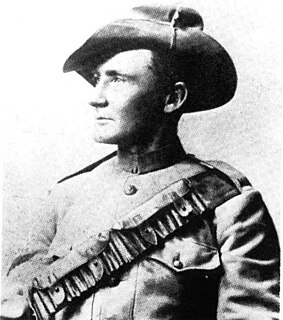 W
WHarry "Breaker" Harbord Morant was an Anglo-Australian drover, horseman, bush poet, military officer and war criminal, who was convicted and executed for murder during the Second Anglo-Boer War.
 W
WJoseph Wanton Morrison was a British soldier, best known for commanding the British troops at the Battle of Crysler's Farm during the War of 1812.
 W
WLieutenant-Colonel John Nairne was a Scottish-Canadian soldier and seigneur. Nairne came to Canada in 1758 as a lieutenant, and participated in the captures of Louisbourg and Quebec City. Given Nairne's lack of prospects back in Scotland, he decided to remain in Canada, and in 1762 he received, along with his friend Malcolm Fraser, the seigneury of La Malbaie, with Fraser taking Mount Murray and Nairne receiving Murray Bay and the town of La Malbaie. Nairne retired on half-pay as soon as he received his land.
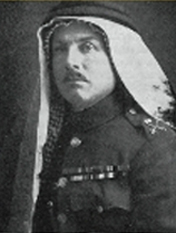 W
WMajor-General Frederick Gerard Peake, known as Peake Pasha, was a British Army and police officer and creator of the Arab Legion.
 W
WField Marshal Herbert Charles Onslow Plumer, 1st Viscount Plumer, was a senior British Army officer of the First World War. After commanding V Corps at the Second Battle of Ypres in April 1915, he took command of the Second Army in May 1915 and in June 1917 won an overwhelming victory over the German Army at the Battle of Messines, which started with the simultaneous explosion of a series of mines placed by the Royal Engineers' tunnelling companies beneath German lines, which created 19 large craters and was described as the loudest explosion in human history. He later served as Commander-in-Chief of the British Army of the Rhine and then as Governor of Malta before becoming High Commissioner of the British Mandate for Palestine in 1925 and retiring in 1928.
 W
WCharles Pye was an English recipient of the Victoria Cross, the highest and most prestigious award for gallantry in the face of the enemy that can be awarded to British and Commonwealth forces.
 W
WLieutenant-Colonel Edgar Hercules Reynolds OBE commanded the Australian Flying Corps (AFC) during World War I. Reynolds' role was mostly administrative, as AFC squadrons were usually subordinate to Australian ground forces or British air commands.
 W
WBrigadier-General Stuart Peter Rolt was a British Army officer who became Commandant of the Royal Military College, Sandhurst.
 W
WAdnan bin Saidi was a Malayan military officer of the 1st Infantry Brigade who fought the Japanese at the Battle of Pasir Panjang in Singapore during World War II. He is considered a national hero in Singapore and Malaysia for his actions during the battle. His name is also the namesake for the Malaysian Infantry Fighting Vehicle (MIFV).
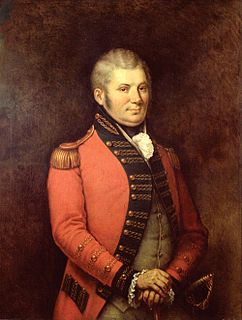 W
WJohn Graves Simcoe was a British Army general and the first lieutenant governor of Upper Canada from 1791 until 1796 in southern Ontario and the watersheds of Georgian Bay and Lake Superior. He founded York and was instrumental in introducing institutions such as courts of law, trial by jury, English common law, and freehold land tenure, and also in the abolition of slavery in Canada.
 W
WMajor Thomas Bridges Boucher Skinner was a British Army officer and engineer. He was a prominent road builder in Ceylon.
 W
WBrigadier General Clement Leslie Smith, was a British Army officer and a recipient of the Victoria Cross, the highest award for gallantry in the face of the enemy that can be awarded to British and Commonwealth forces.
 W
WSamuel Bois Smith was a Loyalist British Army officer and politician. He was appointed to the Executive Council of Upper Canada and appointed Administrator of Upper Canada.
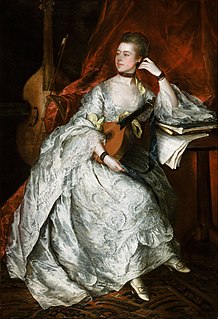 W
WCaptain Philip Thicknesse was an English author, eccentric, and friend of the artist Thomas Gainsborough. He wrote several travel guides.
 W
WSir Thomas Upington KCMG (1844–1898), born in Cork, Ireland, was an administrator and politician of the Cape Colony. He was briefly Prime Minister of the Cape Colony, between 1884 and 1886, during a period of extreme turbulence in the Cape's history.
 W
WGeneral Sir Charles Warren, was an officer in the British Royal Engineers. He was one of the earliest European archaeologists of the Biblical Holy Land, and particularly of the Temple Mount. Much of his military service was spent in British South Africa. Previously he was police chief, the head of the London Metropolitan Police, from 1886 to 1888 during the Jack the Ripper murders. His command in combat during the Second Boer War was criticised, but he achieved considerable success during his long life in his military and civil posts.
 W
WFrancis David Charteris, 12th Earl of Wemyss and 8th Earl of March, styled Lord Elcho from 1916 to 1937, was a Scottish peer, landowner and conservationist. From 1946 to 1991, he served as chairman of the board and then president of the National Trust for Scotland.
 W
WAllan Wilson was an officer in the Victoria Volunteers. He is best known for his leadership of the Shangani Patrol in the First Matabele War. His death fighting overwhelming odds made him a national hero in Britain and Rhodesia.
 W
WGeorge Ramsdale Witton was a lieutenant in the Bushveldt Carbineers in the Boer War in South Africa.